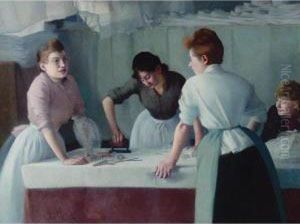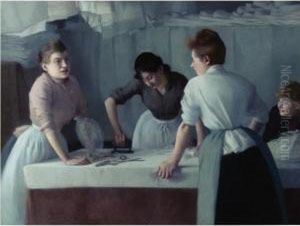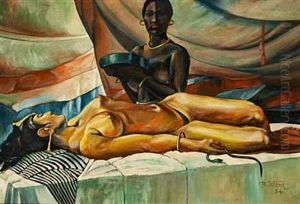Frederic Wenz Paintings
Frederic Wenz was a notable figure in the realm of decorative arts and design, particularly recognized for his contributions to the Art Nouveau movement in the late 19th and early 20th centuries. Born in 1865, Wenz emerged from a period rich in artistic innovation and was instrumental in pushing the boundaries of design during his lifetime. His work, characterized by its intricate patterns, natural motifs, and elegant lines, reflected the era's fascination with beauty and functionality merging in everyday objects.
Wenz's career was marked by a dedication to craftsmanship and a keen eye for detail. He was deeply influenced by the natural world, a common theme in Art Nouveau design, which is evident in his use of floral and organic shapes. This influence extended beyond mere representation, as he sought to capture the essence and dynamism of nature in his creations. His designs were not only beautiful but also highly innovative, incorporating new materials and techniques that were at the forefront of the artistic movements of his time.
Throughout his career, Frederic Wenz contributed to various projects, ranging from decorative items and jewelry to furniture and architectural elements. His ability to adapt and apply his distinctive style across different mediums made him a versatile and sought-after designer. Despite his death in 1940, Wenz's legacy lives on through his contributions to the Art Nouveau movement and his lasting influence on the decorative arts. His work continues to be celebrated for its beauty, ingenuity, and the way it encapsulates the spirit of an era that sought to harmonize art and life.



